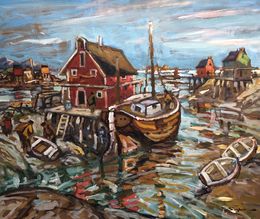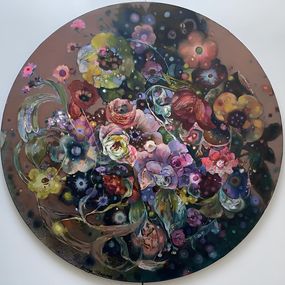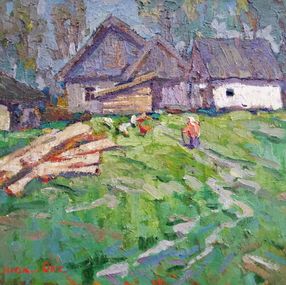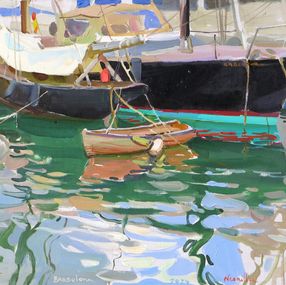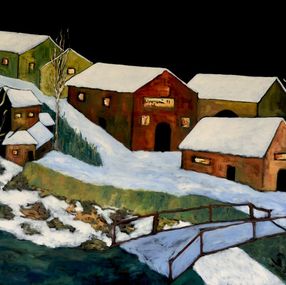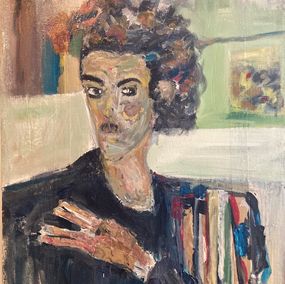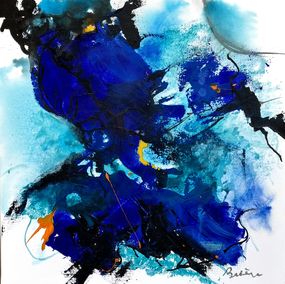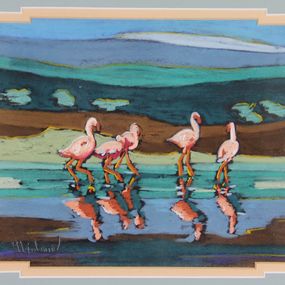
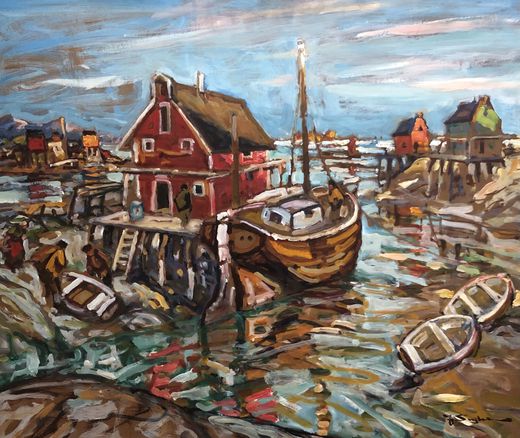
Biography
Julius Seyler (born May 4, 1873 in Munich and died November 22 or November 24, 1958 in Munich) was a German painter and sportsman.
As a child, Seyler was found on the ice rinks and also on the Kleinhesseloher See ice skating, in summer he was a rower and sailor on the lakes around Munich, he also devoted himself to landscape painting.
When Seyler's father died in 1878, his mother moved with Julius and his sister from Memmingen to Munich to live with their brother, the bank manager and member of the state parliament, Gottfried August Christoph. During the school year 1883/84, Julius entered the Maximiliansgymnasium in Munich, moved to the Alte Realgymnasium in 1888 and left it in 1891. He showed talent with artistic and athletic skills. His uncle determined him to become an officer, but Seyler fled the cadet institute and from 1890 took private painting lessons from Ludwig Schmid-Reutte.
In 1892, Julius Seyler became a pupil of Wilhelm von Diez at the Academy of Fine Arts in Munich, in 1898 he passed to Ludwig von Herterich and in 1900 to Heinrich von Zügel and took, among others. 1904, participated in his open-air studies in Wörth am Rhein. From 1899 he was in Diessen or Fischen am Ammersee, and around 1900 in Dachau. In 1900, Seyler began painting outdoors. From 1902, he went on study trips to the Netherlands and Belgium, including studies with Anton Mauve and Jacob Maris, in the Atlantic, Norway, Canada and the United States. In 1903 he moved into an apartment on Lake Ammersee, where he lived and painted until 1912. By this time, Seyler had made a name for himself in the art world and was seeking new challenges beyond the sport. Julius Seyler and the Black-footed Indian Jack Big Moon at Glacier Park Seyler first stayed in Paris in 1909. In Munich, the American of Norwegian origin, Helga Boeckmann, became his painting pupil. He traveled with her to the United States, where the wedding took place on July 30, 1910 in St. Paul, Minnesota. In 1912, the couple returned and settled in Munich. In 1913 Julius and Helga Seyler traveled to the United States again for the wedding of Helga's brother. During the family visit, the First World War breaks out. During and after the war, the couple lived in Balsam Lake, Wisconsin, from 1914 to 1921. Seyler ran a farm and befriended black-footed Indians in Montana. Much of his painting then dealt with the Blackfeet and their history.
When Seyler returned to Munich in 1921, he was able to build on his earlier work in Germany. He was a painter of high productivity, the Bayerische Staatsgalerie bought his works and critics applauded. In 1922, the daughter Sigrid Ingeborg was born in Munich; In 1924, the appointment of Seyler as professor h. c. at the Munich Academy of Fine Arts. Seyler visited Paris and the south of France for the third time in 1927; In 1930/35, he stayed several times on the island of Sylt. In the early 1940s, he slowly began to go blind. The Second World War hit Seyler hard: in a bomb attack in 1943 his studio on Georgenstrasse in Munich was destroyed and in 1944 300 works were bombed and damaged. water infiltration in the Pinakothek. Seyler himself survived the war in Hirschau am Chiemsee. After returning to Munich in 1946, Seyler was hardly more productive due to his poor eyesight. Upon his death in 1955, Otto Dix made the death mask.





